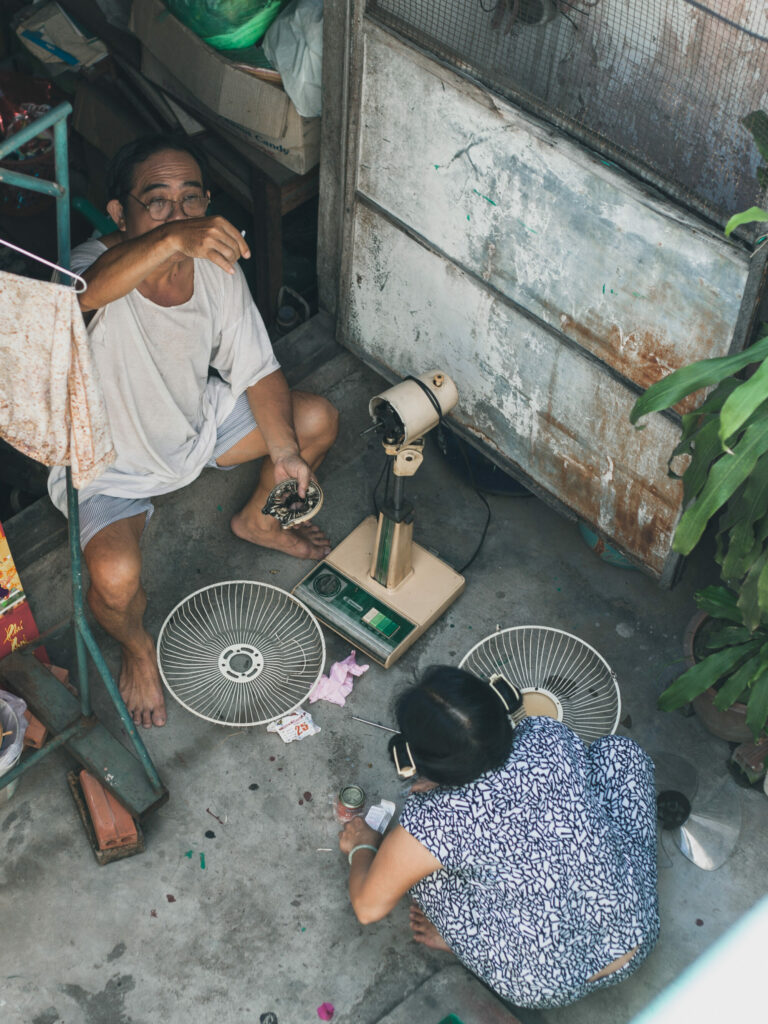Hanoi’s Old Quarter – A Peek Inside
Hanoi’s Old Quarter is a buzzing hive of people, sights, smells and sounds. It truly smacks you in the face and assaults all five senses. The Old Quarter is one of the best examples of intangible national heritage, making it the heart and soul of the capital. This section of the city has over 1000 years of history, extends over 100 hectares and houses well over 26,000 people. The area has a boundary to the north from Hang Dao Street and the South from Cau Go and Hang Thung Street. Most Vietnamese people called Hanoi’s Old Quarter many other names like 36 Streets or Ke Cho – Trading Town, as it is the central hub for local trade and industry.

HISTORY OF HANOI’S OLD QUARTER
Hanoi’s Old Quarter was formed in the 11th century as a trading town. Traders and skilled workers came from different parts of Vietnam to trade and sell their skilfully made products and handicrafts.
In the early 16th century, under the Le Dynasty, Hanoi’s Old Quarter became famous for it’s distinctive trading streets. Traders from all over the country set up shop and sold their wares from their home towns. It was also a popular place for Chinese traders to sell their goods, along with a smattering of other nationalities from far flung places in the world. These same streets slowly formed the place we know by the name of the 36 Craftsmen Streets or Hanoi’s Old Quarter.
French/Indochina settlement brought a range of utilities to the area. These included pavements, drainage, lighting and wider streets. Many homes were built with French, Russian and Western influences, that can still be appreciated in the appearance of the buildings and streets when you walk around the area.
After the two Indochina wars with the French and American’s many local government families moved to live in this area which increased the population dramatically. It also created thriving and enterprising businesses to cater for this community. Many families have kept their generations of business alive over the years, including jewelry makers, hardware suppliers and herbal medicine traders.
DAILY LIFE IN HANOI’S OLD QUARTER

Since then, many different products, souvenir shops as well as hotels, cafés and restaurants have been built to serve the local market and tourists.
The Old Quarter of Hanoi is famous not only for its historical buildings and trading products, but also for its atmosphere and charm. The taste of its famous cuisine is delectable and unique to Vietnam. Read our tips on the Vietnam’s best street food! There are a mixture of past and present values in its architecture – Chinese, French, Vietnamese.
Hanoi’s Old Quarter has changed over time but still retains its charm and noise from the tradesmen who bash out metal objects from early morning until night.

It is amazing to just sit in a corner café or restaurants to people watch. Drink a cup of Vietnamese coffee or eat a special Hanoi dish, watching all the life of this bustling city pass you by. Come and experience this part of Hanoi on your trip to Vietnam. Hanoi’s Old Quarter is absolutely one of the destinations that should not be missed. Here’s a link to get the Vietnam Visa process started today.
Author: Michelle Hyde

comments
Be the first to leave a comment forHanoi’s Old Quarter – A Peek Inside